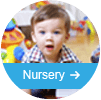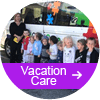Playground Safety Checklist
Playground Safety Checklist: Statistics from 2004-5 suggest around 10% of all children aged 0-14 leaving hospital in Western Australia were victims of falling or other incidents in a playground (over 12,000 children).
Playground Safety Checklist
As a parent or care provider, there are some steps you can take to help reduce at least some of the risks.
Provided playgrounds – ask questions
Many playgrounds and the equipment they provide, are owned or managed by various institutions. They may include:
- primary schools, pre-schools and daycare centres;
- local authorities;
- private companies, such as restaurants and some shops.
In all cases, you can ask them if their playground conforms to the latest Australian playground safety standards issued in 2021. Remember that compliance with these is NOT always mandatory.
It’s also worth asking if the institution has employees on-site that are trained in basic first aid.
You can also ask if you can inspect the playground (or just do so if it is open to the public) and look for:
- signs of rust or serious corrosion on apparatuses;
- loose bolts, screws or other fixings;
- check the stability of things designed to be climbed up, such as slides;
- exposed sharp edges;
- moving parts that might trap fingers or loose clothing;
- elevated surfaces without hand and other guardrails to prevent falls;
- projecting hard surfaces that children could hit their heads on if falling;
- hard floor surfaces such as concrete or stone (ideally, rubberised flooring should be used where children might fall).
In schools and daycare centres for younger children, most playground activities will be under constant supervision. However, keep in mind that in restaurants, parks and other privately-provided playgrounds, it is typically the accompanying adult that is responsible for the supervision of their child when using the facilities.
Private facilities
Some parents may have a play area and equipment in their garden for their children and their children’s friends to use. Birthday parties are a good example of such events.
In these situations, common sense should prevail. You can have a look at the safety guidelines and check out the facilities yourself.
Some things slightly more commonly seen in these situations and which are worth looking for:
- paddling pools – which are great fun but which can be lethal for younger children if playing unsupervised (ideally, younger children should never play on apparatuses of any kind if they’re unsupervised);
- equipment designed for another age group – this is often assumed to apply only to younger children using apparatuses intended for older children but in fact, older children using items designed for babies and toddlers can be equally as dangerous;
- elevated trampolines – most experts suggest children under 6 should not be allowed to trampoline unless an adult is holding their hand and controlling them;
- the presence of dogs – even normally placid family dogs may become over-excited if lots of children are playing boisterously on equipment and they may react accordingly by nipping or trying to join in and adding fall risks as a result;
- bouncy castles – some hospital statistics show around 40% of playground accident admissions are related to injuries on bouncy castles. Most experts say children under 5 should not be allowed to use them and all children playing on them must be under adult supervision. The castle must be securely tethered and children must be forbidden from playing too close to the edge for fear of bouncing out in an uncontrolled fashion with a hard landing on the ground as a result (cushioning on the ground should always be in place at the point of entry/exit).
Fun must prevail
While all the above tips are valid, there is a risk of over-reacting and trying to ‘cotton-wool’ children. All kids need to experience physical play and they will inevitably suffer some minor bumps, scratches, knocks and grazes as a result.
Caution with playgrounds is about avoiding serious injuries and taking some of the precautions above should help to achieve that.













